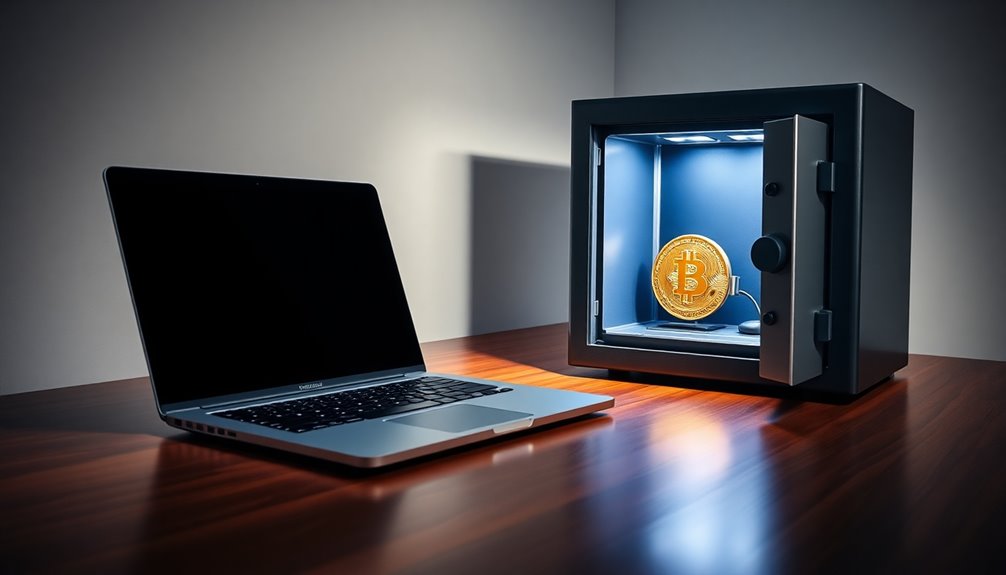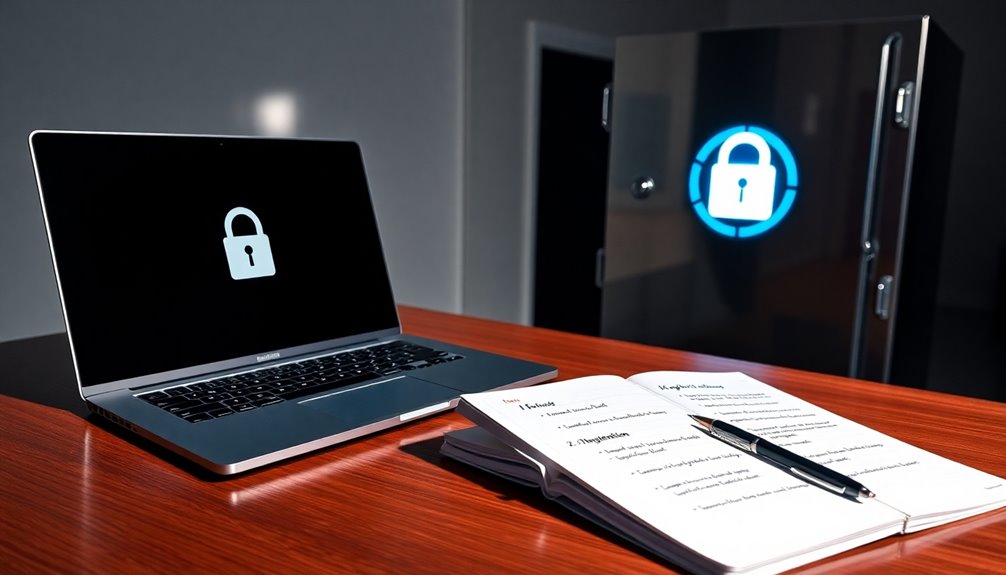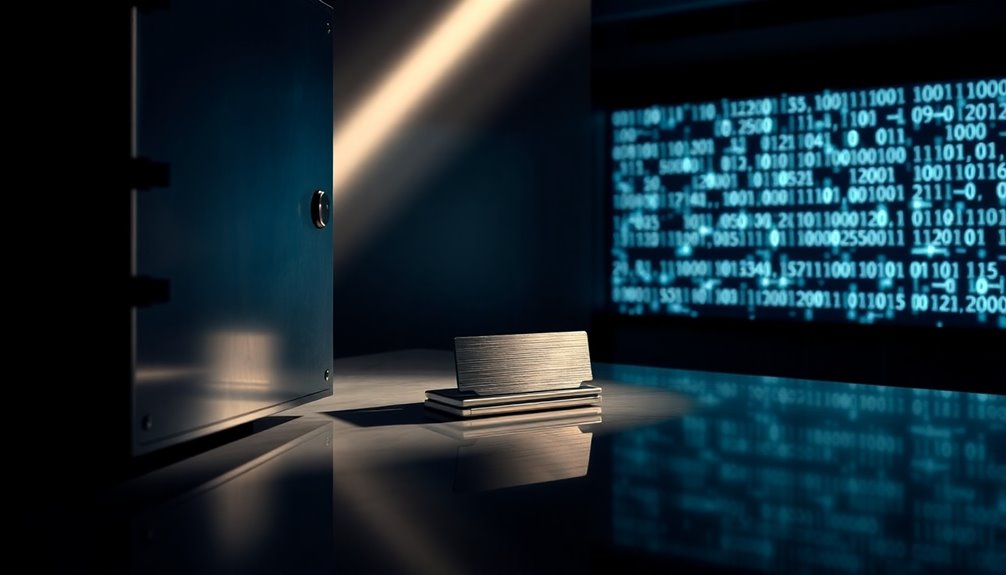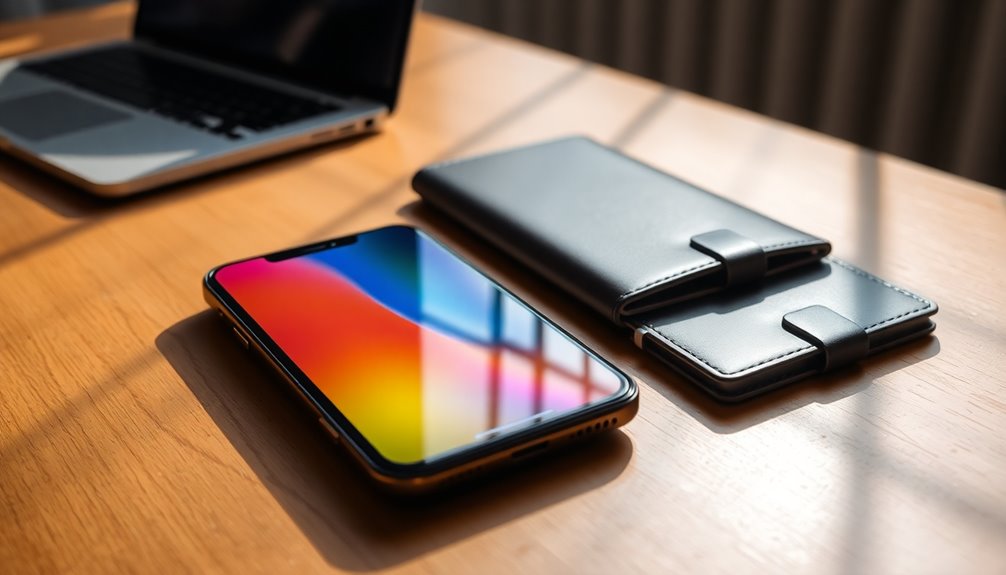An air gap is a crucial security measure that keeps your crypto assets isolated from potential online threats. This can be done physically, like using an offline device, or through electronic means, like disconnecting devices from the internet. By operating offline, you're protected against hacking and malware attacks, giving you full control over your private keys. While this method offers significant privacy and peace of mind, it's essential to implement best practices to avoid vulnerabilities. If you're looking to ensure your crypto security even further, there's more to explore on how to effectively set up an air gap.
Key Takeaways
- An air gap is a security measure that isolates devices from networks to prevent unauthorized access and hacking.
- It can be implemented physically or electronically, ensuring sensitive data remains secure from online threats.
- Air-gapped systems enhance privacy by securely storing private keys away from the internet.
- The offline operation of air-gapped devices significantly reduces the risk of malware and data exfiltration.
- Best practices include using reputable hardware wallets and maintaining physical security of offline devices to mitigate vulnerabilities.
Definition and Purpose

An air gap is a critical security measure that isolates a device or system from any network or external connections, making it less vulnerable to cyber threats. This isolation can be physical, like securing digital assets in a salt mine, or electronic, where devices are disconnected from networks. You can also achieve logical air gaps through processes like encryption and hashing. The primary purpose of an air gap is to prevent unauthorized access, hacking, malware, and data exfiltration. Whether it's protecting sensitive data, critical infrastructure, or intellectual property, implementing an air gap is essential for enhancing security. Additionally, many cold wallets, such as the ELLIPAL Titan, utilize air-gapped technology to ensure private keys remain secure from all online attacks.
Benefits

While many security measures offer some level of protection, air gaps provide unparalleled benefits for safeguarding your crypto assets.
By operating completely offline, air-gapped wallets eliminate the risks of online attacks and hacking attempts, ensuring your private keys are stored securely and away from prying eyes.
You'll enjoy enhanced privacy since your keys remain isolated from the internet, making them inaccessible to hackers. This is achieved because they generate and store private keys in an offline environment, further securing your assets.
The offline transaction signing process adds another layer of security, reducing the risk of interference.
Plus, you maintain full control over your private keys, fostering self-sufficiency and trust in your security measures. This autonomy not only enhances your security but also eliminates the risks associated with third-party custodians. To further bolster your protection, consider implementing additional security layers such as two-factor authentication, which is critical in safeguarding your accounts from unauthorized access. For those seeking a deeper understanding, twofactor authentication explained can provide insights into how this essential method adds another layer of defense against potential threats.
With air gaps, you significantly minimize vulnerabilities, giving you peace of mind as you manage your cryptocurrency.
Implementation Steps

Implementing an air-gapped wallet is a straightforward process that ensures your crypto assets remain secure. Start by researching different wallet types, like hardware, computer, and smartphone options. For hardware wallets, consider devices like Coldcard or Ellipal Titan, ensuring you buy from reputable sources.
Next, follow the manufacturer's instructions for setup and make sure to store private keys securely. Use QR codes or micro-SD cards to create and sign transactions in your air-gapped environment. This method enhances security against online threats due to physical disconnection.
After signing, export your transactions back to your original wallet for broadcasting. Finally, confirm that your transaction has been recorded on the blockchain, ensuring all data transfers are secure and that you've implemented necessary security measures against potential threats.
Challenges

Even with the robust security that air-gapped wallets offer, several challenges can undermine their effectiveness. Attackers can exploit physical media like USB sticks, delivering malware during installation or using removable drives to infect your isolated system. Additionally, vulnerabilities exist in air-gapped wallets that can be exploited by attackers, highlighting that high isolation does not equate to absolute security. Social engineering poses another threat, as hackers may impersonate employees to gain access. Insider threats amplify the risk, as those familiar with your setup can exploit vulnerabilities. Additionally, software updates can serve as an entry point for malware, reminiscent of how Stuxnet infiltrated an air-gapped facility. Lastly, human-centric risks arise from the need to transfer data, where even accidental connections can compromise security. These challenges highlight the importance of vigilance in maintaining air-gapped security.
Limitations and Vulnerabilities

Although air-gapped wallets provide a layer of security for crypto assets, they come with significant limitations and vulnerabilities that can jeopardize their effectiveness.
For instance, attackers can exploit physical media, like USB sticks, or use social engineering tactics to breach security. You must also be aware that malware can be preinstalled or transmitted via removable devices. Additionally, the use of air gaps does not eliminate the risks of data leakage through removable media.
Data transfer challenges can hinder important updates, leaving your system vulnerable. Even though you might think QR codes or microSD cards enhance security, they don't eliminate risks.
Setting up air-gapped wallets requires technical expertise, and vulnerabilities in the devices themselves can be hard to detect.
Best Practices

With the limitations and vulnerabilities of air-gapped wallets in mind, it's important to adopt best practices for their setup and maintenance. Here are some tips to help you secure your assets effectively:
| Best Practice | Action | Frequency |
|---|---|---|
| Choose the Right Wallet | Select hardware wallets like Ledger | Initial Setup |
| Dedicated Offline Device | Use a separate device, disconnect | Always |
| Regular Updates | Keep software current | Regularly |
Additionally, maintaining the physical security of your dedicated offline device is crucial to prevent unauthorized access and ensure the safety of your assets.
Frequently Asked Questions
How Do Air Gaps Compare to Traditional Cybersecurity Measures?
Air gaps offer stronger isolation and physical security compared to traditional cybersecurity measures. By completely disconnecting systems from networks, you significantly reduce the risk of malware and cyber attacks.
This method limits attack vectors and enhances data integrity. However, keep in mind that air gaps aren't foolproof; they can still be vulnerable to internal threats and complex recovery challenges.
Ultimately, you'll weigh the pros and cons based on your specific security needs.
Are Air-Gapped Systems Completely Immune to Cyber Threats?
Air-gapped systems aren't completely immune to cyber threats. While they're isolated from the internet, vulnerabilities still exist.
You could face risks from physical compromises, insider threats, or supply chain issues. Advanced tactics like acoustic communication and RF signals can breach these systems.
Additionally, human error and unpatched vulnerabilities pose significant dangers.
What Industries Most Commonly Use Air Gaps?
You'll find air gaps most commonly in industries like military, finance, utilities, healthcare, and research.
These sectors rely on air gaps to shield sensitive data from cyber threats, ensuring confidential information stays secure.
By isolating systems from the internet, they significantly reduce the risk of unauthorized access and malware attacks.
Each industry employs air gaps to maintain data integrity and comply with regulatory standards, providing robust security against potential breaches.
Can Air-Gapped Systems Be Hacked Through Physical Media?
Yes, air-gapped systems can be hacked through physical media. When you use USB drives, CDs, or external hard drives, you risk introducing malware.
Even if your system is isolated, attackers can exploit these devices to gain access or exfiltrate data.
It's crucial to implement strict access controls and conduct regular audits. By staying vigilant and educating yourself and your team on these risks, you can better protect your air-gapped environment from potential threats.
How Often Should Air-Gapped Systems Be Audited?
You might think air-gapped systems are completely safe, but they still need regular audits. Aim for at least annual reviews, and consider additional checks after significant updates.
By conducting comprehensive technical and physical assessments, you'll identify vulnerabilities and reinforce your security. Focus on high-risk areas and document your findings to track improvements.
Engaging cybersecurity experts can also enhance your audit process, ensuring your system remains robust against potential threats.
Conclusion
In summary, using an air gap is a crucial step for securing your cryptocurrency assets. Studies show that organizations employing air-gapped systems reduce their risk of cyberattacks by up to 90%. By isolating your digital wallets from the internet, you’re significantly enhancing your security against potential threats. While it’s not foolproof, following best practices can give you peace of mind. Embrace the air gap strategy to safeguard your crypto investments effectively. In addition to implementing an air gap, diversifying your investment strategy can further protect your assets. For instance, the golden cross trading strategy explained involves looking for signs of bullish momentum in the market, which can help you make informed decisions about when to buy or sell your cryptocurrencies. By combining robust security measures with sound trading strategies, you can navigate the volatile landscape of cryptocurrency more effectively and secure your financial future.









